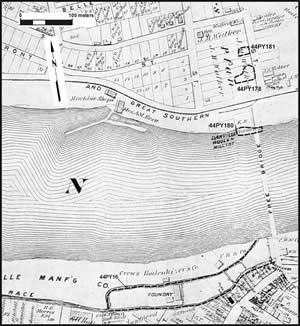Historical Background
 As with most archaeology involving sites from periods with written records, historical research was a key part of the Front Street excavations. The later periods of occupation at these sites were so recent that the archaeology even benefitted from oral accounts. Our goal was to place the sites in a historical frame of reference at several levels.
As with most archaeology involving sites from periods with written records, historical research was a key part of the Front Street excavations. The later periods of occupation at these sites were so recent that the archaeology even benefitted from oral accounts. Our goal was to place the sites in a historical frame of reference at several levels.
First, an overview of the Southern mill industry gives a regional perspective for looking at the archaeological evidence from the Front Street sites. Next, a discussion of Schoolfield Village provides a comparison with another local, but more formally organized millworker community. Just as important as these wider contexts, site-specific documentary research linked the sites to the individuals who lived there. Detailed historical information about Front Street’s residents also revealed some interesting trends in occupations, social status, education, and mobility within this particular neighborhood of Danville.
Image: This 1877 map shows the layout of North Danville before Riverside Cotton Mills was established in 1882. A factory and a residence were located in the the northeast corner of the large lot that later became part of Front Street. Riverside had acquired the entire lot by 1890. (Beers 1877)















